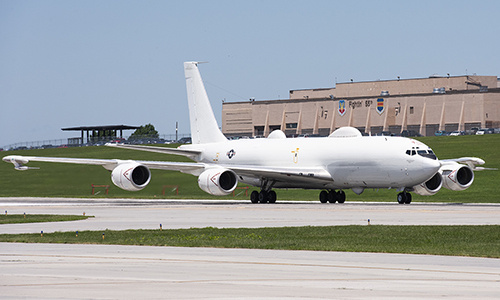USE-6B Mercury plane hit a bird when landing on a Maryland base on October 2, causing at least $ 2 million in damage.
"On the plane at that time there was a group of experts involved in testing and evaluating the system. No one was injured in the incident. We do not know which bird the accident was of," the center spokesman said. Naval Air Force Tim Boulay said in an email to US media on October 17.

E-6B Mercury aircraft belonging to strategic contact group 1 landed at Offutt Air Base, Nebraska, USA on July 15. Photo: US Navy
Boulay said the engine of the E-6B Mercury was replaced and the plane returned to service after a few weeks of flight stoppage. The E-6B Mercury attracted the birds of the 20 Air Force inspection and evaluation squadron, stationed at the Patuxent River air base.
The US Naval Safety Center rated this as a Class A accident due to damage of more than $ 2 million. This was the first aviation incident by the US military after the new fiscal year began on October 1.
The October 2 incident was one of five US military aviation bird-related accidents in the past decade, including another E-6B that crashed in 2018. bird damage includes an F-35B fighter, a T-45C training aircraft and an AH-1W attack helicopter.
In February, an E-6B Mercury broke its tail wing when it crashed into a hangar when it was pulled out after maintenance. Another E-6B had to make an emergency landing at Tulsa International Airport, Oklahoma on March 5 after a fire alarm appeared in the main compartment.
E-6B Mercury is called "Doomsday" aircraft of the US military, which is responsible for maintaining communication in the event of a nuclear war. The US $ 141 million aircraft serves as a command and control center in the air, maintaining contact between the nuclear trio of subcontinent ballistic missile submarines, strategic bombers and LGM-30G Minuteman III missile operating unit with the president and US defense minister.
The E-6B flight crew usually consists of 22 people when performing air command, including an admiral or a general officer. The U.S. Navy maintains at least one E-6B in the air at all times, with aircraft flying at sea at the lowest speed for 10 consecutive hours.



 MarvinBaluyotVelarde
MarvinBaluyotVelarde







